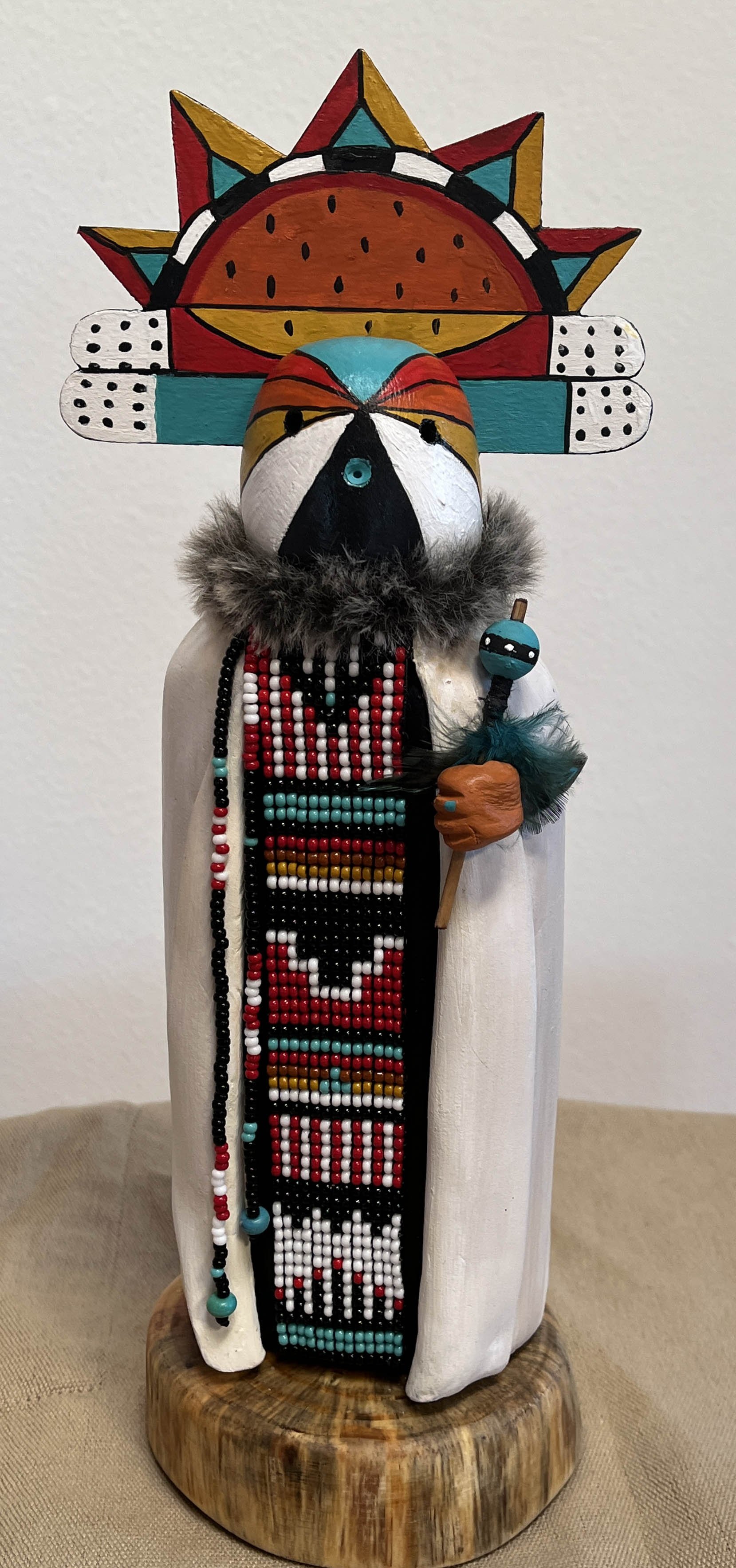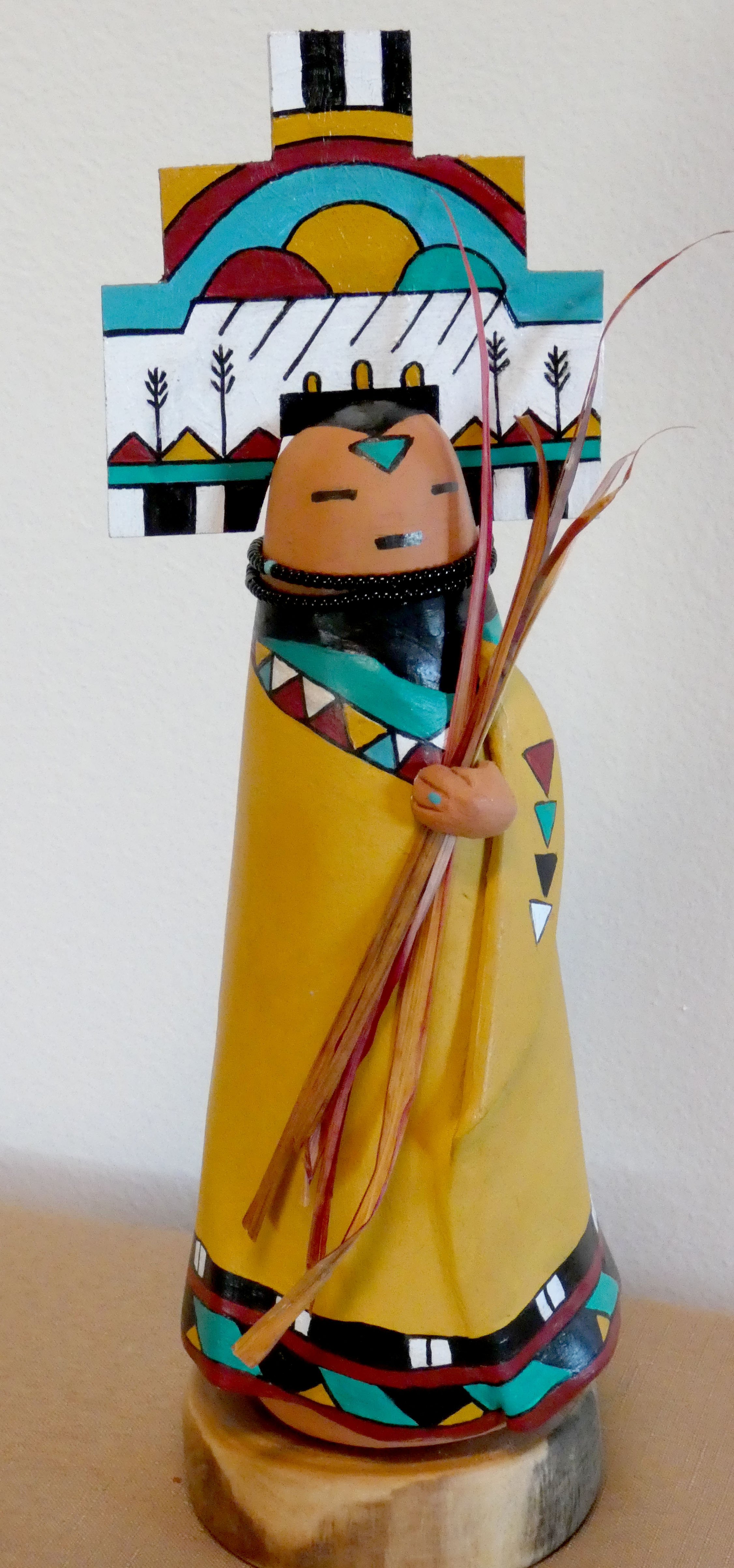Sculptures • Spirits of The South
Shaman
Messenger
My sculptures are made from a combination of mineral and plant-based clay and are crafted with reverence and respect for the spirits that inspired them. They are not meant to be Kachina dolls, but rather sculptures inspired by native traditions. No religious significance is intended. There are many myths and legends of how the earth as made and how plants, animals and humans came to live upon it. These figures are part of my Primitive Collection based on the early stories of creation, spirits and animals.
The Shaman
The Shaman was inspired by the numerous petroglyphs and stories of the early holy men who brought the power of the great spirit to the people. They were venerated as healers and visionaries but could also be formidable enemies.
Shaman
Messenger
Messenger
The Messengers
There are many myths and legends of how the earth as made and how plants, animals and humans came to live upon it. The Messenger holds the stories of the ancients with the petroglyphs that make up his beadwork.
Corn Maiden
Corn Maiden
Corn Maiden
Corn Maiden was inspired by Iatiku, from the Pueblo story of emergence. Two women rose up on a great tree into the present world from the world underneath.
Before they left, they were given all the things that they would need to bring life to their new world...plants, animals, food... so that it may be complete.
Corn Maiden
Crow Mother
The Crow Mother
This sculpture was inspired by Angwusnasomtaka, the mother of the Hu, or Whipper Katsinum.
The wing-like appendages on the sides of her mask are her trademark. Crow Mother leads the procession as it emerges from the underground kivas. She is followed by an elaborate procession of dancers. She carries the yucca whips used to initiate children in the religion.
Crow Mother
Grandmother
A sculpture inspired by Hahay’i wuuti. The mother all Katcinum. Her participation in the ceremonial dances includes giving bread to the children and occasionally pouring water over the heads of spectators. Her hair is done in the traditional Hopi style with side whorls and bangs.
Grandmother
Raven
Raven
Raven
The Ravens
The raven is a significant figure in most Native American cultures.
It is seen as the creator of light and as a trickster figure. As the maker of light, the raven symbolizes the ultimate creator of all things that existed before the beginning. As a trickster figure, the raven is seen as a catalyst of mischief.
Raven is regarded with respect and wariness. Appreciating the raven from afar through storytelling is safer than being in close contact with such an unpredictable character.
Raven
Quail
The Quail Animal Helper appears in various tribal dances. Among Southwestern tribes, Quail embodies modesty and humility. Some tribes, like the Cherokee and Sioux, saw quails as messengers between worlds or even as creatures that could grant wishes.
One of the most important things quails can teach us is the importance of intuition and listening to our inner voice. Quails are incredibly sensitive to their surroundings and rely on their keen hearing and intuition to survive. Because of this, they can serve as powerful symbols of the importance of being attuned to our inner wisdom and following our instincts.
Dancers
Dancers are an integral part of native ceremony and their dances help carry messages and requests to the greater spirits. They dance in request for blessings of rain, plentiful game and a bountiful harvest.
Quail
Quail
Barn Owls
Barn owl symbolism is related to listening, productivity, and intuition. They’re also associated with a mystery: their nocturnal habits and lack of coloration make them hard to spot in the wild. A barn owl has a wide range of vision due to its large eyes. It can see in almost complete darkness, which helps it hunt at night.
Barn owls have been known for centuries as symbols representing wisdom, knowledge, and insight into hidden things.
Does seeing an owl mean that a death is near? Likely not. But it might be a sign that there is something significant that is about to change that will lead you on the path towards truth.
Medium Barn Owl
Broadhead Dancer
Rain Dancer
Large Barn Owl






















